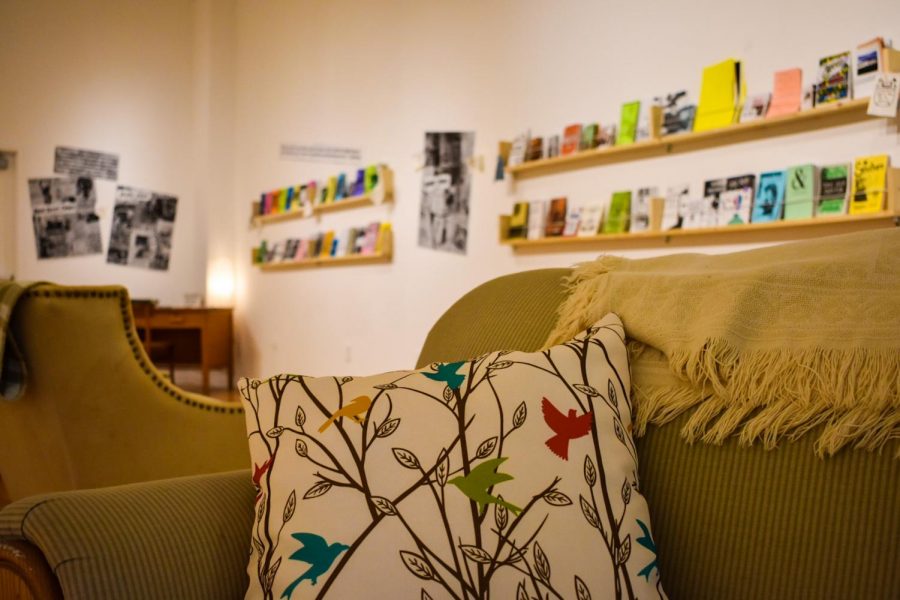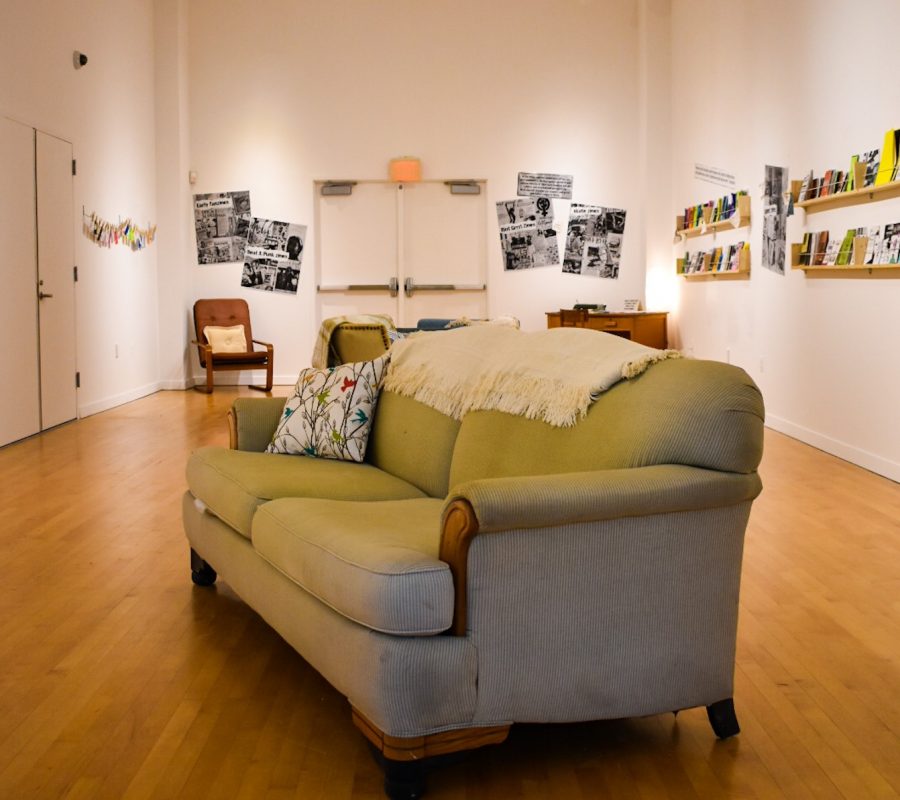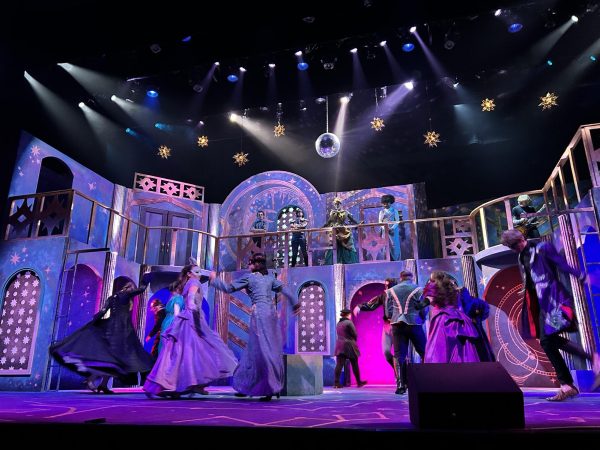Gallery dedicated to zine history opens in CAB
The Zine Gallery opened February 27 in the Cultural Arts Building main gallery area, featuring comfy couches to encourage visitors to engage with the exhibits. Photo by Zachary Kilby.
Touching the art in an art gallery is generally discouraged, but this was fully reversed Thursday night at the opening of the Cultural Art Department’s latest gallery dedicated to zines.
Zines, a shortened slang-form of the word magazine, are independently-published and distributed booklets that act as ways to disseminate information, art or poetry. They are mostly associated with counter-cultural movements and activism, mainly working to emphasize engagement with art and information.
Engagement with the zines was strongly encouraged by one of the organizers of the gallery, Shannon Bourne, a lecturer in studio art here at UNC Wilmington. Her main hope for the gallery was for people to come in, sit on the couches and interact with the zines.
“Please touch the art!” said Bourne.
The reception opened with good food, wine and atmosphere supplied by a DJ playing vintage alternative rock on a record player. Also present in the reception area was a tabling from the “Milk & Honey” anthology zine, who had a few pieces included in the exhibit collection.
The exhibit itself consists of balsa wood shelves full of neatly-organized handmade zines, ready to be picked up and read by visitors to the gallery. Other zines were also displayed on miniature clotheslines, accenting the spaces around the shelves and breaking up the clinical whiteness of the gallery walls with their short bursts of colorful art and eye-catching covers. Such covers included gripping topic titles such as “Shitty Drawings of Star Wars,” “Queer Haircuts” and “Eat This News,” as well as poetry collections and informational zines, such as one instructing the reader on their rights when interacting with law enforcement.
The range of zines on display showed the many different design and production styles associated with our culture. Many were hand-bound and made from regular 8-by-11 inch paper, while others were mixtures of miniature or oversized pages. The art and illustrations were done by hand in pencil, pen or paint. Some showed more signs of mass production, ranging from photocopy edge errors to sleek and glossy risograph pages.
The exhibit also includes a build-your-own zine activity table, foregrounding the intimate nature of zine culture and the emphasis on interactiveness of the exhibit. The activity also provides general instructions on how to begin making zines at home.
The collection on display in the gallery was mostly part of Bourne’s personal collection, though significant contributions were produced by UNCW students currently studying graphic design, art, creative writing and literary studies.
“I’m really excited to be in the show and to see everybody’s stuff,” said Alexis Olsen, a student contributor whose zines were included in the exhibit.
“I’ve been making zines for about three years now, and I started when I came to UNCW. I took Anna Lena [Phillips Bell]’s book-making class, and we learned how to make a one-page zine in that. And that’s what started everything for me.”
Mikayla Dell’Aquila, a senior majoring in psychology, remarked on the expansiveness of the topics covered by the zines included in the exhibit.
“I thought it was cool because I liked how there is a lot about how you could make a zine about anything, giving the artist a lot of creative liberty,” said Dell’Aquila.
The zine exhibit is located in the main gallery of the Cultural Arts Building and is free to the public until the exhibit closes on April 8, 2020.










